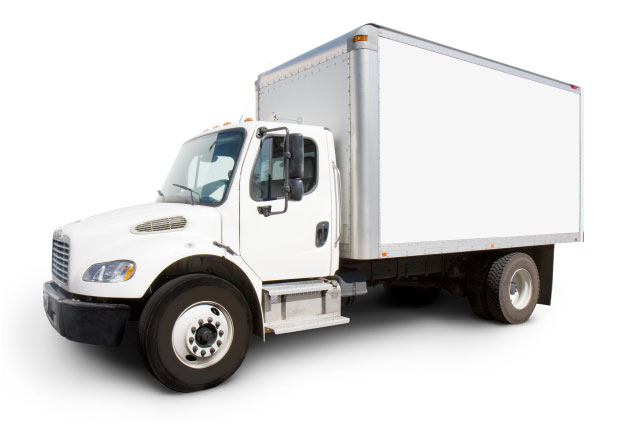Mastering the Art of Solo Heavy Lifting
Posted on 25/06/2025
Mastering the Art of Solo Heavy Lifting: The Ultimate Guide
Solo heavy lifting isn't just a test of brute force -- it's a craft that marries strength, technique, and science. Whether you're a home gym enthusiast, a warehouse worker, or someone passionate about self-reliance, mastering solo heavy lifting can elevate your confidence and independence. This comprehensive guide will teach you everything you need to know about approaching heavy lifts alone, minimizing risks, and maximizing rewards.
Why Master Solo Heavy Lifting?
Solo lifting is a valuable skill, not just for those pursuing powerlifting or bodybuilding, but for anyone who might have to move awkward or substantial items on their own. Here are some compelling reasons why solo heavy lifting proficiency is a must:
- Self-reliance: Handle emergencies or everyday tasks without waiting for help.
- Home gym advantage: No need for a spotter or partner to challenge your limits.
- Work efficiency: Improve productivity in jobs involving manual labor.
- Safety and injury prevention: Learn correct techniques to avoid accidents.
Common Situations Demanding Solo Lifting Skills
- Setting up home gym equipment
- Moving furniture or appliances
- Landscaping and garden work
- Lifting and storing goods in warehouses or garages

Understanding The Risks of Solo Heavy Lifting
Solo heavy lifting is rewarding, but it comes with its unique challenges and dangers. Understanding the risks prepares you to mitigate them effectively.
- Muscular strains: Overexerting muscles or using incorrect form.
- Back injuries: Most common when using the back instead of legs.
- Crush injuries: Occurs if an object falls or slips.
- Delayed injury response: Alone, you must handle any emergencies immediately.
Preparing to Lift: Your Pre-Lift Checklist
Proper preparation is the foundation of effective and safe solo heavy lifting. Never underestimate the importance of pre-lifting routines:
Assess the Environment
- Clear your working area to prevent tripping hazards.
- Check the surface -- ensure it's not slippery or uneven.
- Ensure adequate lighting for visibility.
Evaluate the Load
- Test the item's weight by nudging or slightly raising one side.
- Know the item's shape and balance points for proper gripping.
- Wear appropriate clothing and footwear with strong grip.
Warm Up Properly
- Dynamic stretching: Loosen up muscles and joints to prevent injury.
- Light cardio: A few minutes of jumping jacks or brisk walking.
- Practice lifts: Try the movement without weight, or with a lighter item.
Mastering the Solo Heavy Lifting Technique
The cornerstone of mastering solo heavy lifting lies in technique. Proper technique ensures efficiency and safety -- a single mistake can lead to weeks of recovery. Let's break down the essential techniques:
1. Plan Your Lift
- Map out your path--know where you'll set the load down before picking it up.
- Remove obstacles and keep the destination spot ready.
- Assess if you'll need to make turns or go through narrow spaces.
2. Use a Wide, Stable Stance
- Feet should be shoulder-width apart, toes slightly pointing outward.
- This stance ensures maximum balance and power transmission.
3. Get a Firm Grip
- Use gloves if necessary for improved grip.
- Hold the load as close to your body as possible -- this minimizes strain.
4. Lift With Your Legs, Not Your Back
- Bend your knees, squat down, and keep your back straight.
- Drive upward through your heels, squeezing your glutes and core.
- Keep your chest up and shoulders back throughout the lift.
5. Controlled Movement Is Key
- Move slowly and deliberately; sudden jerks increase risk of injury.
- If changing direction, pivot with your feet; never twist your torso with a heavy load.
6. Set Down Safely
- Reverse the lifting technique -- squat down, keeping back straight, as you lower the load.
- Do not drop the item; control it all the way to the ground.
Essential Equipment and Tools for Solo Heavy Lifting
Having the right equipment can make solo heavy lifting safer, more efficient, and less taxing on your body. Here's a list of useful lifting aids every solo lifter should know about:
- Lifting belts: Provide lower back support and help maintain good posture.
- Lifting straps: Secure grip on slick or awkward items.
- Gloves: Prevent blisters and improve grip strength.
- Dollies and hand trucks: Move large objects with less effort.
- Sliders and furniture movers: Especially useful for heavy furniture on smooth surfaces.
- Lever bars and lifting jacks: For prying heavy objects or lifting one side.
Investing in these tools not only saves your body from wear and tear, but also minimizes injury risk during solo heavy lifts.
Programming Your Solo Heavy Lifting Workouts
When training alone, it's important to develop a program that builds both strength and technique. Here's how to structure your solo lifting workouts to maximize muscle and minimize risk:
1. The Big Three Lifts
- Deadlift: The king of full-body strength and the most useful real-life lift.
- Squat: Trains legs and reinforces correct lifting mechanics.
- Overhead Press: Teaches stability, shoulder strength, and core engagement.
*When practicing these lifts alone, use safety bars or racks with adjustable supports.*
2. Accessory Exercises
- Farmers Walks: Carrying heavy objects trains the grip and core stability.
- Single-arm Rows: Builds one-sided strength for awkward loads.
- Step-ups or Lunges: Mimic functional lifting while developing leg strength.
- Core work: Planks and anti-rotation exercises to protect your spine.
3. Progressive Overload for Solo Lifters
- Increase weights gradually: Avoid rapid jumps in load to prevent injuries.
- Track performance: Use a training log to monitor gains and setbacks.
- Prioritize quality over quantity: Fewer reps with perfect form are more beneficial than high-rep, sloppy sets.
Recovery and Injury Prevention Techniques
Your journey to solo heavy lifting mastery doesn't end when you set down the weights. Recovery is just as important as training.
Effective Recovery Strategies
- Stretching and foam rolling: Reduce muscle tightness and promote blood flow.
- Hydration and nutrition: Support muscle repair with plenty of water, protein, and whole foods.
- Sleep: Aim for 7-9 hours nightly to optimize recovery and mental focus.
- Active rest: Gentle walks or light activities on off days keep body primed.
Preventing Injuries When Lifting Alone
- Listen to your body--pain is a warning, not a challenge.
- Avoid lifting when fatigued or distracted.
- Make use of all available safety equipment, especially when attempting max weights.
- Don't ignore minor strains -- address them before they get worse.
Advanced Tips: Developing Mental Fortitude for Solo Heavy Lifting
Lifting heavy loads on your own requires more than physical strength -- it's a test of willpower, focus, and resilience. Here's how to sharpen your mental edge:
- Visualization: Imagine the perfect lift before each attempt.
- Breathing techniques: Controlled breath reduces anxiety and powers your movements.
- Goal setting: Break down large objectives into manageable milestones.
- Celebrate small victories: Every successful solo lift boosts confidence for the next.
Safety Protocols for Emergency Situations
Even the most skilled solo lifters can encounter emergencies. Preparation is your best defense:
- Keep a phone nearby: In case you need to call for help.
- Let someone know your schedule: Especially if attempting a new personal best.
- Use safety pins, catch bars, or straps: Especially when working with free weights.
- Know your limits: Never compromise on safety just to hit a personal record.
Real-Life Applications of Solo Heavy Lifting Mastery
The skills developed in mastering solo heavy lifting can translate into every area of life. Here are practical, everyday scenarios:
- Moving: Transporting boxes, furniture, or supplies with confidence and efficiency.
- DIY projects: Lifting and positioning tools, lumber, or appliances by yourself.
- Outdoor activities: Hauling bags of soil, rocks, or firewood easily.
- Assisting others: Lend help with safe form and share know-how with family and friends.
Frequently Asked Questions About Solo Heavy Lifting
Is solo heavy lifting safe?
Yes, solo heavy lifting is safe when performed with proper technique and equipment. Always assess risk, use safety tools, and start light.
What should I do if I feel pain during a lift?
Stop immediately. Never push through pain as it can lead to serious injury. Rest, assess, and seek professional advice if it persists.
How often can I train heavy lifting alone?
Allow at least 48 hours between heavy sessions for the same muscle group. Listen to your body's recovery cues.
Do I need specialized equipment?
Not always, but lifting aids like belts, straps, and supports can boost both safety and performance--especially when lifting near your max.

Conclusion: Becoming a Master of Solo Heavy Lifting
Learning the art of solo heavy lifting unlocks practical strength, independence, and confidence in every sphere of your life. By emphasizing technique, preparation, and recovery, you cultivate not just muscles, but a mindset for safe, lifelong performance. Remember: The journey to mastery is not about moving the heaviest object in the room, but about doing so safely, repeatedly, and confidently -- even when you do it alone.
Practice, patience, and the right approach will make you a solo heavy lifting expert, ready to take on real-world physical challenges with ease.





